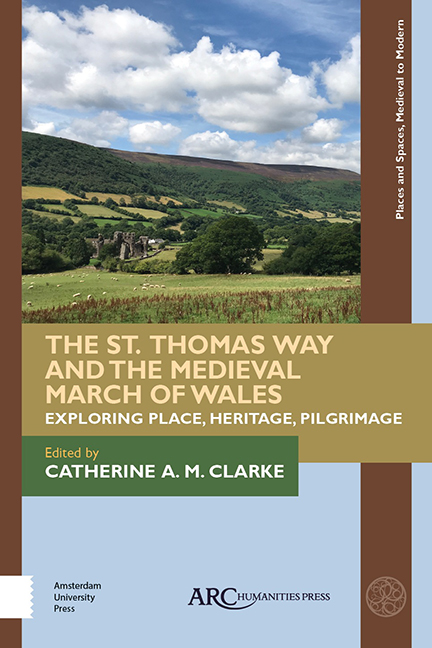Chapter 2 - In the Footsteps of the Past: Medieval Miracle Stories and the St. Thomas Way
Published online by Cambridge University Press: 20 November 2020
Summary
IT IS NO understatement to claim that St. Thomas of Hereford— perhaps better known as St. Thomas de Cantilupe— is one of the most unfamiliar and under-studied of England's medieval saints. In the city and diocese of Hereford, where he was bishop from 1275 to 1282, he is less well known than the early medieval St. Ethelbert of East Anglia (d. 794) and the martyred Archbishop of Canterbury, St. Thomas Becket (1162– 1170, canonized 1173). Outside the diocese of Hereford, fewer people still have ever heard of this obscure St. Thomas— unless they are historians focused on thirteenthcentury English governmental or ecclesiastical history. Some may remember references to “Tommy Canty” in the 2015 ITV miniseries based on Phil Rickman's novel, Midwinter of the Spirit. Yet for many, if they have ever heard of England's second St. Thomas, it is likely as not for the miraculous resuscitation of William Cragh, the hanged man of Swansea. It is this particular story of “miracle, memory and colonialism in the Middle Ages” that has brought about renewed interest in the miracles of St. Thomas of Hereford. From this interest many articles, books, a documentary, and the recent Swansea “City Witness” project have all had their part in thrusting St. Thomas of Hereford back into public view after almost seven hundred years in obscurity.
The purpose of this chapter is to explore the St. Thomas Way through the witness testimonies of miracles recorded at St. Thomas's shrine in Hereford Cathedral between 1287 and 1312. The miraculous cures were recorded in manuscripts held at the shrine well into the fourteenth century. The contemporary chronological list of miracles survives today as Oxford, Exeter College, MS 158 and this manuscript is considered to contain the second highest number of miracle cures performed by a medieval English saint after St. Thomas Becket. In viewing these miracle stories as we tread the St. Thomas Way ourselves, we gain a glimpse of details of medieval daily life and how such a cult in this period could be transmitted into the wider world. This chapter first focuses on places along the St. Thomas Way— notably Swansea, Longtown, Kilpeck, and Hereford— where medieval pilgrims recorded as having been cured at St. Thomas's tomb came from.
- Type
- Chapter
- Information
- The St. Thomas Way and the Medieval March of WalesExploring Place, Heritage, Pilgrimage, pp. 37 - 56Publisher: Amsterdam University PressPrint publication year: 2020



